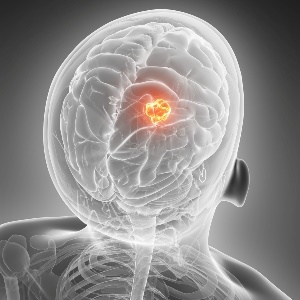
Glioblastoma brain cancer remains one of deadliest tumours, and new research shows five-year survival rates remain low for patients with the disease.
While there have been improvements in short- and medium-term survival rates for patients with the most common type of brain tumour in adults, only 6% of patients live for five years after diagnosis, according to the Mayo Clinic researchers.
More aggressive treatment
Glioblastomas claimed the lives of both Sen. Ted Kennedy in 2009 and his colleague in the senate, John McCain, who succumbed to the cancer in 2018.
The new study's authors believe more aggressive treatments need to be considered for all glioblastoma patients. They published their findings in July in the journal Mayo Clinic Proceedings.
the study was based on a review of nearly 49 000 glioblastoma cases in a national database from 2004 through 2009. It found that only 2 249 patients lived at least five years after diagnosis.
Among those patients who lived for at least five years, the median length of survival was seven years and four months. Median means half lived longer, half lived less time.
Those living longer were relatively younger adults, female and non-white, the study found. Other factors in five-year survival included generally good health; higher income; tumours that were on the left side of the brain or outside the brainstem; and radiation treatment.
Tumour size did not appear to have a significant effect on long-term survival, a finding at odds with previous studies.
'Novel and radical' approaches
"The introduction of chemotherapy in the treatment of glioblastoma was revolutionary, although this research suggests that chemotherapy serves more as a temporising measure against disease recurrence and death," said study senior author Dr Daniel Trifiletti, a radiation oncologist with the Mayo Clinic in Jacksonville, Florida.
"Considerable work needs to be done to provide hope for patients with glioblastoma," he added in a Mayo news release.
Trifiletti said that will likely require "novel and radical" approaches to treatment.
Gliomas represent about 75% of malignant primary brain tumours, according to previous studies, and glioblastoma, grade four glioma, is among the most aggressive forms of cancer.
Trifiletti and his co-authors said nearly all glioblastoma patients should be offered enrolment in a clinical trial. Several studies are underway to test new surgeries, radiation techniques and drug therapies.
"To me, the most exciting area is in cellular therapy," Trifiletti said. "In my lab, I am evaluating the possibility of using targeted cellular therapy as an agent that can synergise with existing therapies, including radiation."
Image credit: iStock




 Publications
Publications
 Partners
Partners















